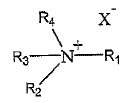- KAWAGUTI & PARTNERS Home>
- News Letter>
- July, 2018
K&P’sIntellectual Property High Court Decision Report in 2018
July, 2018
Updated 7 JAN 2019
1. How should Enablement Requirement for Invention of Composition be Examined?
EKC Technology Inc. v. Fujifilm Corporation, Case No. 2017 (Gyo-Ke) 10143(Decision rendered on July 5, 2018)
The Patentee, EKC Technology, obtained a patent relating to compositions and processes for photoresist stripping and residue removal in wafer level packaging in 2014. Against the EKC Technology’s patent, Fujifilm filed an invalidation trial with the JPO in 2015. During the trial proceedings, EKC Technology demanded a correction of the claims and the specification. The JPO admitted the correction, but rendered a decision of invalidation on the grounds of not satisfying support requirement and enablement requirement and lacking inventive step on Claims 1 to 9; and dismissed the demand of invalidation on Claims 10 to 15. EKC Technology filed an appeal against the JPO's decision on Claims 1 to 9 to the IPHC in 2017.
The corrected Claim 1 of the EKC Technology’s patent at issue claims as follows:
A composition for removing polymer, etch residue, ash residue, or a combination thereof from an integrated circuit substrate, from a wafer-level packaging substrate, or from a printed circuit board, on which a circuit or a portion of a circuit is present, which composition comprises:
an organic ammonium compound having the formula:

wherein X is hydroxide, R1 is an alkyl group, and R2, R3, and R4 are independently alkyl or hydroxyalkyl;
an oxoammonium compound having the formula:

wherein X is sulfate, hydrogen sulfate, phosphate, hydrogen phosphate, dihydrogen phosphate, nitrate, a carboxylate, a halide, carbonate, hydrogen carbonate, bifiuoride, or a combination thereof, R5 is hydrogen, and R6 and R7 are hydrogen;
and water,
wherein the pH of the composition is above 7;
and wherein the composition is capable of removing the polymer, the etch residue, the ash residue, or the combination thereof from the substrate, while maintaining the operability of the circuit, or portion thereof, associated with the substrate.
One of the main issues in this case related to how the enablement requirement for an invention of a composition should be examined. The IPHC answered to the issue as follows:
First, having reviewed the description of the specification of the patent at issue, the IPHC found that the claimed composition at issue was required to be able to remove a polymer, an etch residue or an ash residue from an integrated circuit substrate and the like, and simultaneously inhibit the damages of the circuit formed with a metal within an allowable range, based on which the IPHC showed the criteria for judging enablement requirement, that is, whether a composition having both the properties could be produced or not.
On the basis of the above criteria, the IPHC further reviewed the description of the specification, particularly, the Section of Examples, in detail, and found that some examples were demonstrated in order to obtain evaluation results relating to the property of removing a polymer, an etch residue or an ash residue from an integrated circuit substrate, while there was no specific description that the property of inhibiting the damages of the circuit formed with a metal within an allowable range was evaluated.
Then, the IPHC reviewed common technical knowledge, and acknowledged that those skilled in the art could have understood at any rate that both the properties were compatible with each other by adjusting pH in view of common technical knowledge. Nevertheless, the IPHC found that the description of the specification of the patent at issue disclosed no actual value of pH of the specific compositions at all, and thus specific information on the pH was too little.
On the basis of the above findings, the IPHC decided that those skilled in the art would have had to seek the amount of each ingredient in the compositions by trial and error without proper clue in order to obtain adequate compositions having both the properties, which forced those skilled in the art to bear undue burden.
Accordingly, the IPHC concluded that the description of the specification of the patent at issue was not specifically disclosed so that the claimed composition could be produced and used.
Conclusively, the IPHC dismissed the EKC Technology’s appeal, and upheld the JPO’s decision.
An appeal to the Supreme Court was NOT filed against this decision, and thus the decision is final and binding.
K&P’s Comments This decision follows the court precedents and the JPO’s practice. Namely, for examining enablement requirement on composition claims, the property (or properties) of the claimed composition, which corresponds to the effect(or effects) brought about thereby, is(are) first found on the basis of the description of the specification of the patent at issue, and then it is determined whether those skilled in the art could understand that the claimed composition shows such property(or properties) or effect(or effects), all properties or effects if there are more than one, on the basis of the description of the specification, in particular, examples, and common technical knowledge.
In July 2018, the IPHC handed down 7 decisions including the above case on patent, and maintained all the previous decisions.
In July 2018, the IPHC handed down 5 decisions on trademark, and overturned the previous decision in 1 case.
In July 2018, the IPHC handed down 1 decision on industrial design, which maintained the previous decision.



